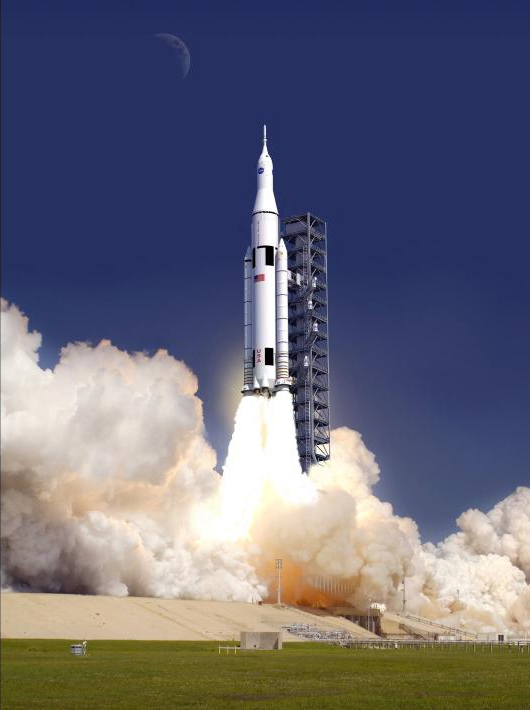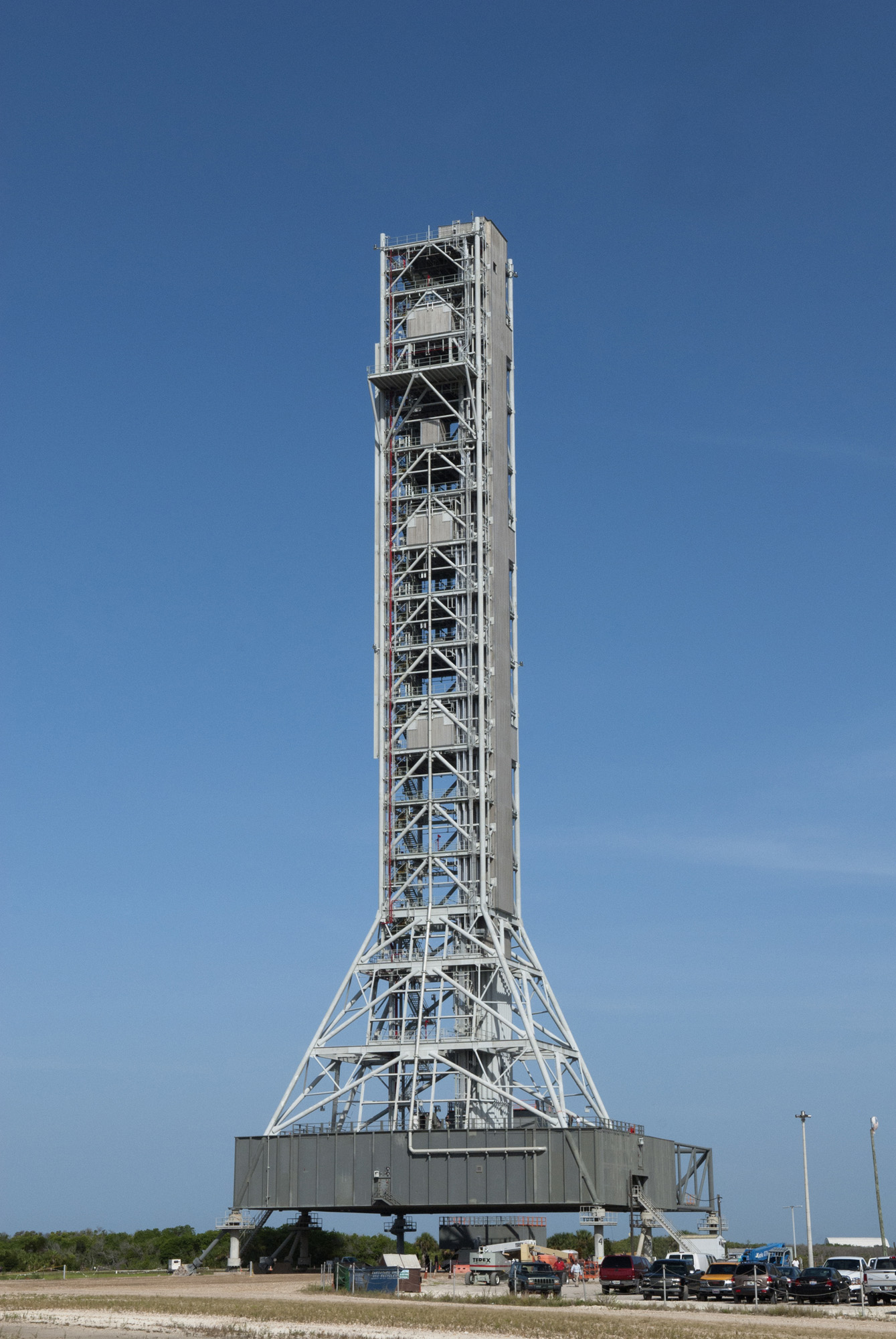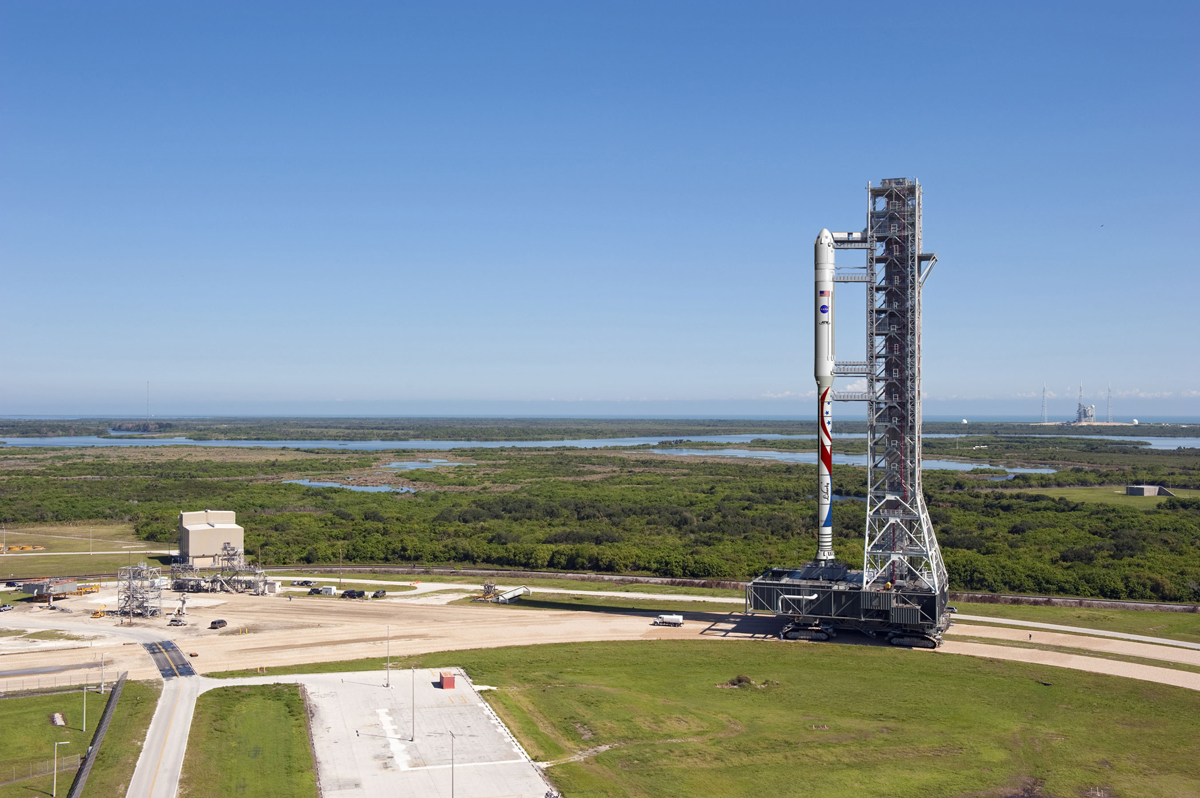
A brand-new launch platform built for NASA moon rockets may instead help send people to asteroids or Mars — or a private company could use it to loft astronauts to low-Earth orbit.
NASA completed the $500 million mobile launch platform in 2010 to prepare for the Ares 1 rocket, part of its moon-oriented Constellation program. Though the Obama administration canceled Constellation last year, the platform should still get significant use, NASA officials said.
The U.S. space agency is looking at adapting the structure for its next-generation deep space rocket, which is known as the Space Launch System (SLS). While that may be the platform's most likely fate, the private company Alliant Techsystems (ATK) has also inquired about the structure for its Liberty rocket, a contender to ferry NASA astronauts to the International Space Station.
"We're looking at using it for SLS, and all those possibilities still are being evaluated," NASA spokesman Allard Beutel said. [Photos: NASA's SLS Rocket for Deep Space Flights]

After Constellation
The mobile launch platform stands about 390 feet (119 meters) tall and is parked at NASA's seaside Kennedy Space Center in Cape Canaveral, Fla.
The platform was built to host the Ares 1 rocket launches that would have lofted the crew-carrying Orion spacecraft skyward under NASA's Constellation program. Constellation aimed to return humans to the moon by 2020; NASA spent about $9 billion over four years on research, technology and infrastructure for the project before it was scrapped. [Related: Space Shuttle Launch Pad 'Cleaned' of Historic Towers]
Get the Space.com Newsletter
Breaking space news, the latest updates on rocket launches, skywatching events and more!
Engineers craned the final piece of the massive platform into place in January 2010. But a month later, President Barack Obama announced he was canceling Constellation and directing NASA to work instead toward getting astronauts to an asteroid by 2025, then on to Mars by the mid-2030s.
Last Wednesday (Sept. 14), NASA announced its plans for SLS, the huge deep space rocket that should help make these long journeys possible. SLS will carry a revised version of the Orion capsule, called the Orion Multi-Purpose Crew Vehicle, and should be ready for its first test flight by the end of 2017, officials said. [Photos: NASA's Multi-Purpose Crew Vehicle]
When the giant rocket is ready to go, it could well blast off from the mobile launch platform.
"The basic structure of the tower is in place and could support an SLS rocket," Beutel told SPACE.com in an email. "So, we're looking at the modifications that would be needed to specifically support the SLS and Orion spacecraft, such as the power and propellant umbilicals (pipes, cables, etc.) now that we've announced the SLS architecture."
While that's what NASA's looking at right now, nothing is set in stone yet, Beutel added. And other parties have expressed interest in using the platform as well.

Private spaceflight possibilities
The Utah-based ATK is working with European firm Astrium to develop a rocket called Liberty. For 30 years, ATK provided the reusable twin solid rocket boosters that launched NASA's space shuttles to low-Earth orbit.
ATK also was tapped to develop the first stage of the Ares 1, and it built a solid rocket motor similar to the shuttle's boosters, but slightly longer. Liberty will incorporate that engine as a first stage and Astrium's Ariane 5 rocket as a second stage, ATK officials have said.
ATK and Astrium hope that NASA selects Liberty to launch its crews to low-Earth orbit. Under its Commercial Crew Development (CCDev) program, the space agency is seeking to spur the capabilities of American private spaceflight companies.
NASA hopes these firms can eventually take over the taxi role of ferrying its astronauts to and from the International Space Station — a service that Russian Soyuz vehicles have been exclusively providing in the wake of the space shuttle fleet's retirement this past July. The agency hopes private spacecraft will be ready to go by 2015 or so.
Liberty is slated to stand about 300 feet tall (91 m) — considerably smaller than the SLS, which may be a towering 400 feet (122 m) in its final configuration. But the mobile launch platform could accommodate either rocket at the moment, Beutel said, since the wiring and piping that would make it specific to one launch vehicle haven't been installed yet.
"ATK has expressed interest in using it, and we've discussed it with them," Beutel said.
While NASA has yet to make a final decision about the mobile launcher's fate, the death of Constellation did not consign the massive structure to the scrap heap.
"I can definitely say the mobile launcher has a lot of potential uses beyond Ares 1," Beutel said.
You can follow SPACE.com senior writer Mike Wall on Twitter: @michaeldwall. Follow SPACE.com for the latest in space science and exploration news on Twitter @Spacedotcom and on Facebook.
Join our Space Forums to keep talking space on the latest missions, night sky and more! And if you have a news tip, correction or comment, let us know at: community@space.com.

Michael Wall is a Senior Space Writer with Space.com and joined the team in 2010. He primarily covers exoplanets, spaceflight and military space, but has been known to dabble in the space art beat. His book about the search for alien life, "Out There," was published on Nov. 13, 2018. Before becoming a science writer, Michael worked as a herpetologist and wildlife biologist. He has a Ph.D. in evolutionary biology from the University of Sydney, Australia, a bachelor's degree from the University of Arizona, and a graduate certificate in science writing from the University of California, Santa Cruz. To find out what his latest project is, you can follow Michael on Twitter.









